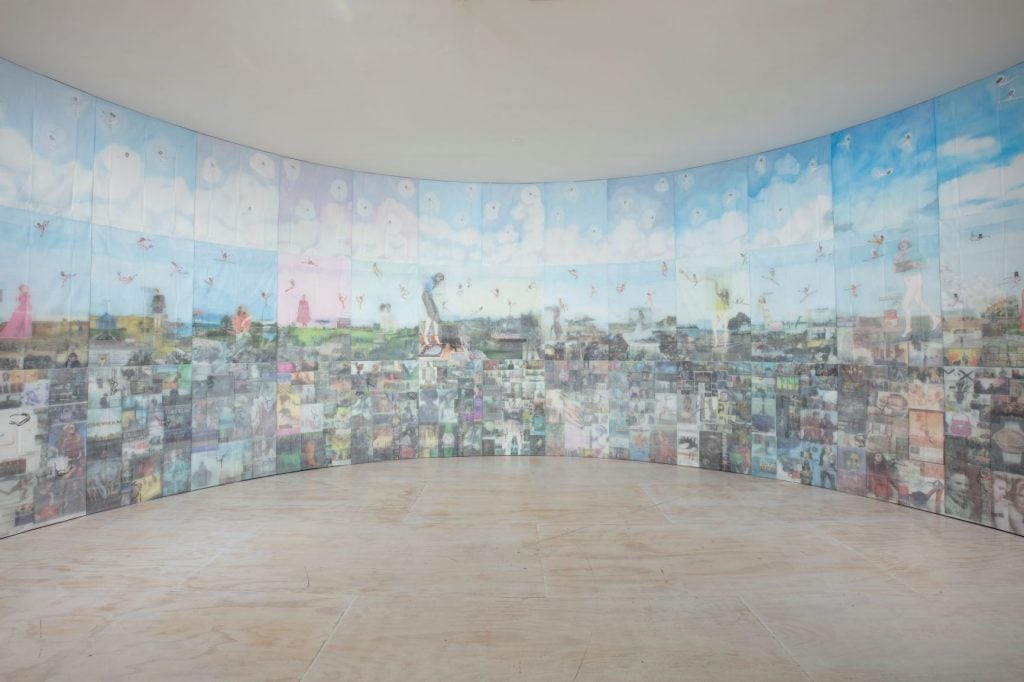In 2017, Agnes Gund sold Roy Lichtenstein’s highly prized Masterpiece (1962) painting to launch the Art for Justice Fund, a temporary grant supporting artists working to reform the criminal justice system. After distributing $125 million in grants over six years, the initiative is coming to an end, but its mission will endure.
As a final act, Gund’s fund provided a major grant for the establishment of the Art and Advocacy Center, a non-profit organization dedicated to mentoring justice-impacted creatives. It was founded by Jesse Krimes and Russell Craig, two incarcerated artists, and is an outgrowth of the duo Right of Return Scholarshipwhich they created in 2017.
Going forward, this scholarship will become one of three central components of the new organization, with a residence in northeastern Pennsylvania and an education-focused “academy.” Employees will work of the center’s headquarters in Brooklyn’s Bed-Stuy neighborhood, which is slated to open this fall.
Krimes, who will lead the center as its first executive director, says artists who lose access to artistic practices while incarcerated often struggle to regain it after release.
“A lot of being an artist is about finding the time and space to dream, think, and create. If you’re constantly mired in pure survival mode, it’s very hard to find that time and resources are always a problem,” he said.

Russell Craig [left] and Jesse Krimes [right] retired on the 2022 Right of Return in Arizona. Photo: Maurice Sartirana. Courtesy of the Center for Art & Advocacy.
Krimes explained that the organization is for artists at every stage of their career. Space and funding will be offered, but also complementary services such as financial management and the creation of course websites.
The center is based on a “restorative model,” he said, and is not intended to compete with other more established fellowship and residency programs like NXTHVN or MacDowell.
“We’re literally trying to create the space to level the playing field for our artists so that they can then go on and get gallery representation and get these amazing residencies and get these other great grants.”
It’s unclear exactly how much the Art for Justice Fund gave to the Center for Art and Advocacy. (“Out of concern for the privacy of current and past awardees, particularly those who may be currently incarcerated,” the fund has a policy of not sharing grant figures.) But Krimes hinted at the impact of the gift. : it “is basically going to allow us to go from six artists a year to almost 250 or 300 artists a year,” he said.
Today’s announcement marks the culmination of years of hard work for the new director, who served nearly six years for cocaine possession after graduating from art school in 2009 While incarcerated, Krimes developed a system for transferring images from magazines onto prison-issued sheets. Eventually, the scope of his practice expanded and he began to hold creative workshops for other inmates.
Upon leaving, Krimes founded Right to Return, which offers $20,000 grants to half a dozen artists a year. Former scholars have gone on to receive Pulitzer Prizes, Guggenheim Fellowships, and MacArthur “Genius” grants.

Installation view of Jesse Krimes, Apokaluptein 16389067 (2010-2013) in the exhibition “Marking Time: Art in the Age of Mass Incarceration”. Courtesy of MoMA PS1. Photo: Matthew Septimus.
The Center for Art and Advocacy’s board of directors, which Krimes says is “still in development,” includes a healthy mix of members from the art world and beyond. Current directors include Craig; Kate Capshaw, an artist; Kate Fowle, senior director of conservation at Hauser and Wirth; Stephanie Ingrassia, collector and administrator of the Brooklyn Museum; Daveen Trentman, co-founder of strategy firm Soze Agency; and Dwayne Betts, lawyer, poet and former Right of Return scholar.
“[We’re] try to do a painting differently,” Krimes said, noting that he wanted a group of people who “believe in the mission of the work we do and are open to creative problem solving.”
“Business as usual will not get us to the world we want to live in,” he continued. “We’re trying to create something a lot more creative and nimble in our approach to solving some of these issues.”
Follow Artnet News on Facebook:
Want to stay one step ahead of the art world? Subscribe to our newsletter to receive breaking news, revealing interviews and incisive reviews that move the conversation forward.
